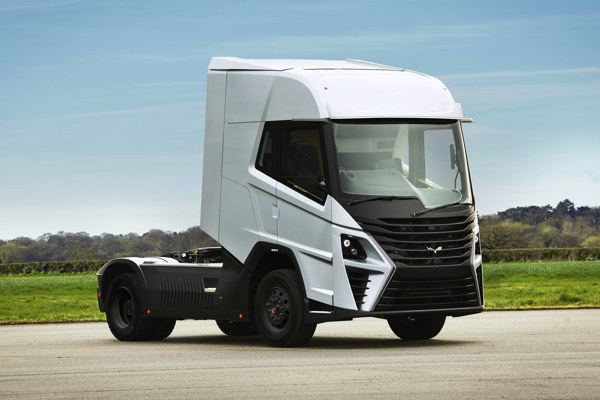CAVs employ technologies which assist or replace the need for humans when driving. These technologies combine connectivity and automation, working to minimise the human error in driving, while providing benefits to the safety, productivity and environment of private and public transport users.
In a bid to revolutionise the transport network and prioritise safety, the UK government have committed £100 million to backing a 2025 roll out of self-driving vehicles on UK roads. In theory, CAVs have the capability to change the driving experience entirely, with vehicles able to navigate safely from A to B while passengers work, relax or even sleep.
In 2022, road traffic collisions caused 1,760 fatalities and 137,013 casualties in the UK. Despite this slight decline in deaths and fatalities from pre-pandemic figures, there remains an urgent need to tackle the devastating impact of road traffic collisions. CAVs could vastly decrease the number of road traffic collisions and fatalities, with technology taking responsibility for safety and removing the potential for human error, which all too often results in devastating consequences.
The benefits and challenges of connected and autonomous vehicles
The vast majority of road traffic collisions are caused entirely by human error. Technology is helping decrease this, with many modern cars able to recognise if their driver is behaving dangerously by alerting the driver to erratic steering wheel movements or any drifting between lanes. Autonomous vehicles can take this one step further, incorporating infrared technology to identify if the driver is tired, distracted or intoxicated and warn the driver. In serious cases, vehicles could be capable of pulling the car over to prevent the driver from continuing on their journey. There are capabilities to extend this principle further in extreme circumstances, with vehicles potentially able to contact insurers or emergency services.
An additional feature already available in many modern vehicles relates to their capabilities in the event of a road traffic collision. Vehicles can record events using video and car analytics through data capture, including speed. Some vehicles can also immediately notify emergency services, providing a specific location of the collision. This in itself has the capability to aid victims more quickly which can be the difference between life and death. Of course, such technologies do raise questions around privacy. As with smart phones, it may be that manufacturers need to be trusted not to spy on their consumers, or monetise the data obtained in this manner.
The "connected" nature of CAVs is capable of making road travel safer. CAVs are able to connect to a network, enabling communications between road vehicles, mobile devices and infrastructure. This level of connectivity has a broad range of potential benefits. In the event of a road traffic collision, other vehicles could be automatically notified and diverted away from the congested collision area. Connected vehicles are also capable of learning through the "experiences" of other vehicles. For example, if collisions occurred at a specific location, vehicles may drive slower or act in a more cautious manner in an act of self-preservation. Day to day, benefits also include cars which are autonomously able to recognise and react to traffic lights, pedestrian crossings, speed limit changes and hazards on or near the road. Connected vehicles may also travel in convoys, known as platooning, to improve traffic efficiency and the safety of passengers.
A significant concern related to connected vehicles is that of cyberattack. As the volume of CAVs on the roads increase, so too do the potential software vulnerabilities which hackers could access for nefarious reasons. Hackers may seek to remotely stop vehicles or direct them to a particular location. Manufacturers are working hard to ensure these fears never amount to reality, and they must continue to work proactively to protect their fleets from security failures, and ensure the safety of drivers, passengers and other road users.
Moving forward
A raft of legislation will be needed to regulate autonomous vehicles in the UK. At present, the UK government has stated that in a CAV-centric future, human passengers may not be liable for incidents or collisions caused by their vehicle. Instead, the manufacturer of the vehicle will be liable for any damages caused. It may be that as technologies continue to progress, manufacturers take additional steps to protect themselves from litigation by monitoring their cars more closely, and tracking and storing data regarding the vehicle's movements.
The Automated and Electric Vehicle Act 2018 ("the Act") goes some way to account for the regulatory issues posed by autonomous vehicles by providing a framework to enable new technologies to be designed, produced and utilised. The Act sets out the liability of insurers where automated vehicles cause accidents, as well as subsequent rights of the insurer to claim against manufacturers if the fault of the accident lies with them. As well as this, the insurer has the right to exclude liability in specific circumstances, for example if the software of the autonomous vehicle is not kept up to date. This framework differs vastly from the traditional automotive model, and will require adjustments for insurers, manufacturers, and consumers alike.
In the USA, self-driving technology is legal and utilised, and liability is already a point of great contention. In one instance, a car in self-driving mode allegedly malfunctioned, resulting in a multi vehicle collision. The driver claimed that the car was driving itself, however the police took the view that the driver was obligated to take back control of the vehicle in the event of malfunction. Manufacturers agree with this and are at pains to stress vehicles today are not fully autonomous, noting that self-driving technology still requires active driver supervision.
Despite the growing popularity of autonomous and semi-autonomous vehicles, further development is required to ensure the safety of both the passengers of autonomous vehicles, as well as other road users. There are countless positive benefits which come with the introduction of CAVs to UK roads, but appropriate regulation is essential to protect passengers and other road users. Legal challenges certainly lie ahead in terms of appropriately attributing liability for road traffic collisions, or for damages.
Morton Fraser MacRoberts and Brake - how to claim after a road traffic collision
Morton Fraser MacRoberts are delighted to partner with Brake, the road safety charity, who support individuals bereaved or seriously injured by road traffic collisions. Brake works to support communities, helping make them safer to stop the tragedy of unnecessary road deaths and injuries. Connected and autonomous vehicles support Brake's vision of a healthy future, with safe roads.
If you have suffered an injury as a result of a road traffic collision caused by any motor vehicle, you should seek advice from a specialist personal injury lawyer. At Morton Fraser MacRoberts, our experienced team will take the time to assess your claim and can help you get the compensation you are entitled to. Contact us today on 0131 247 1000.


